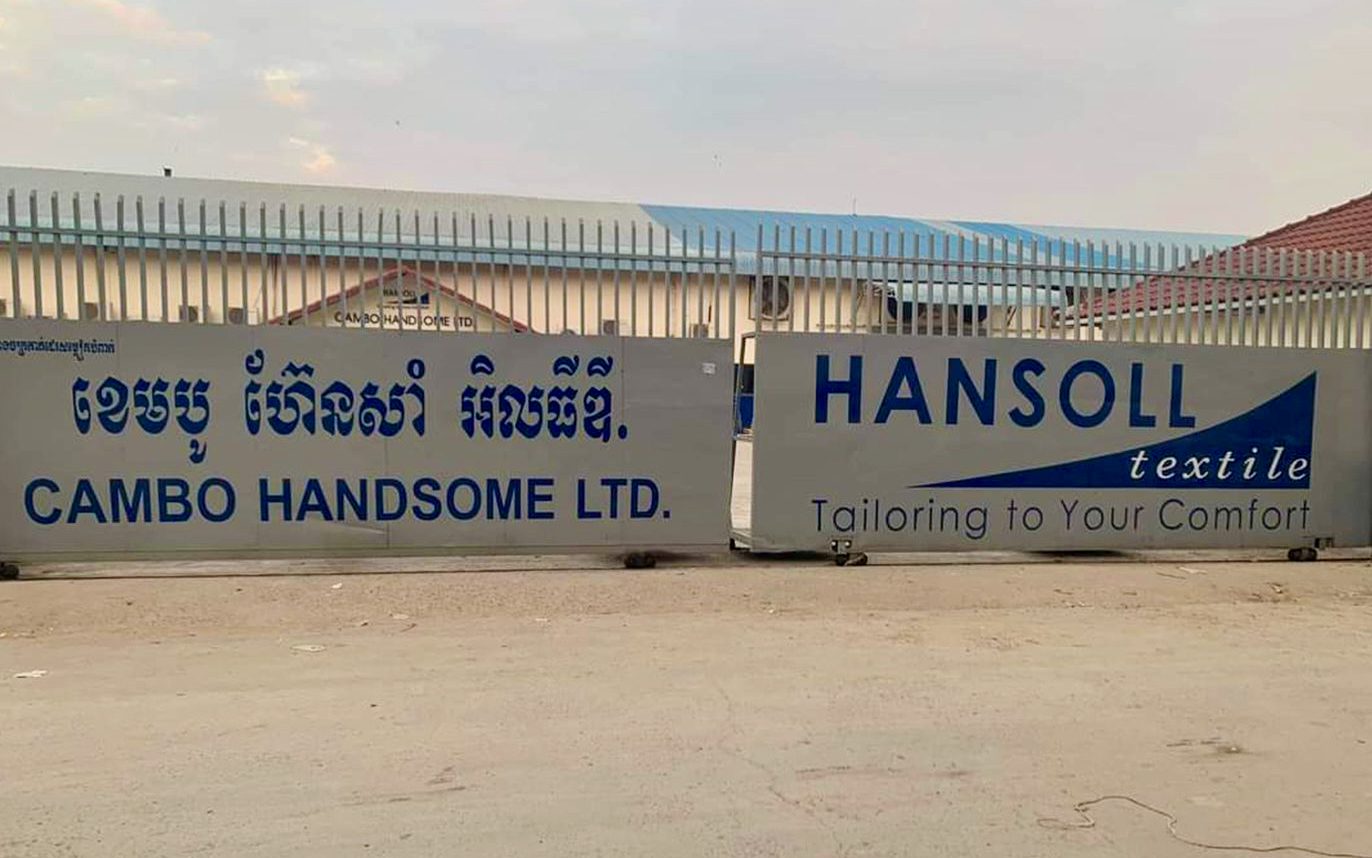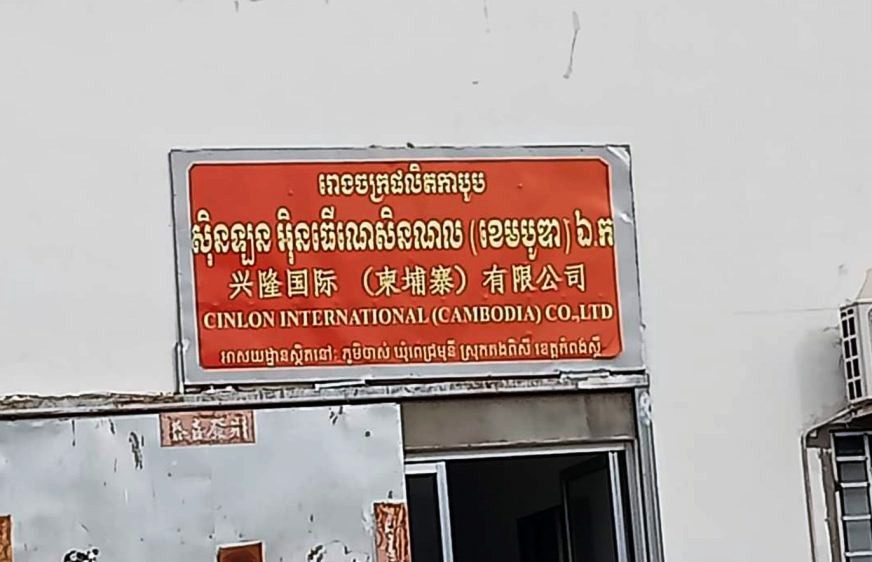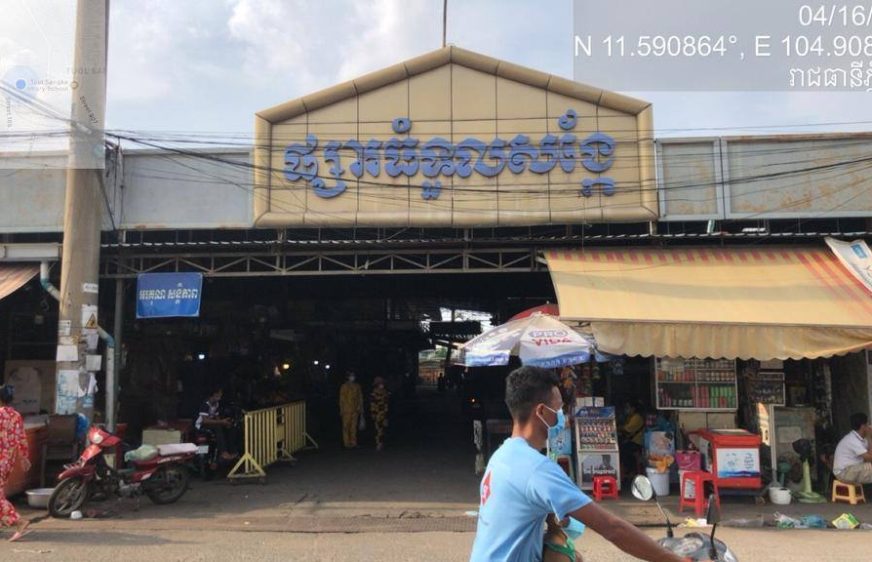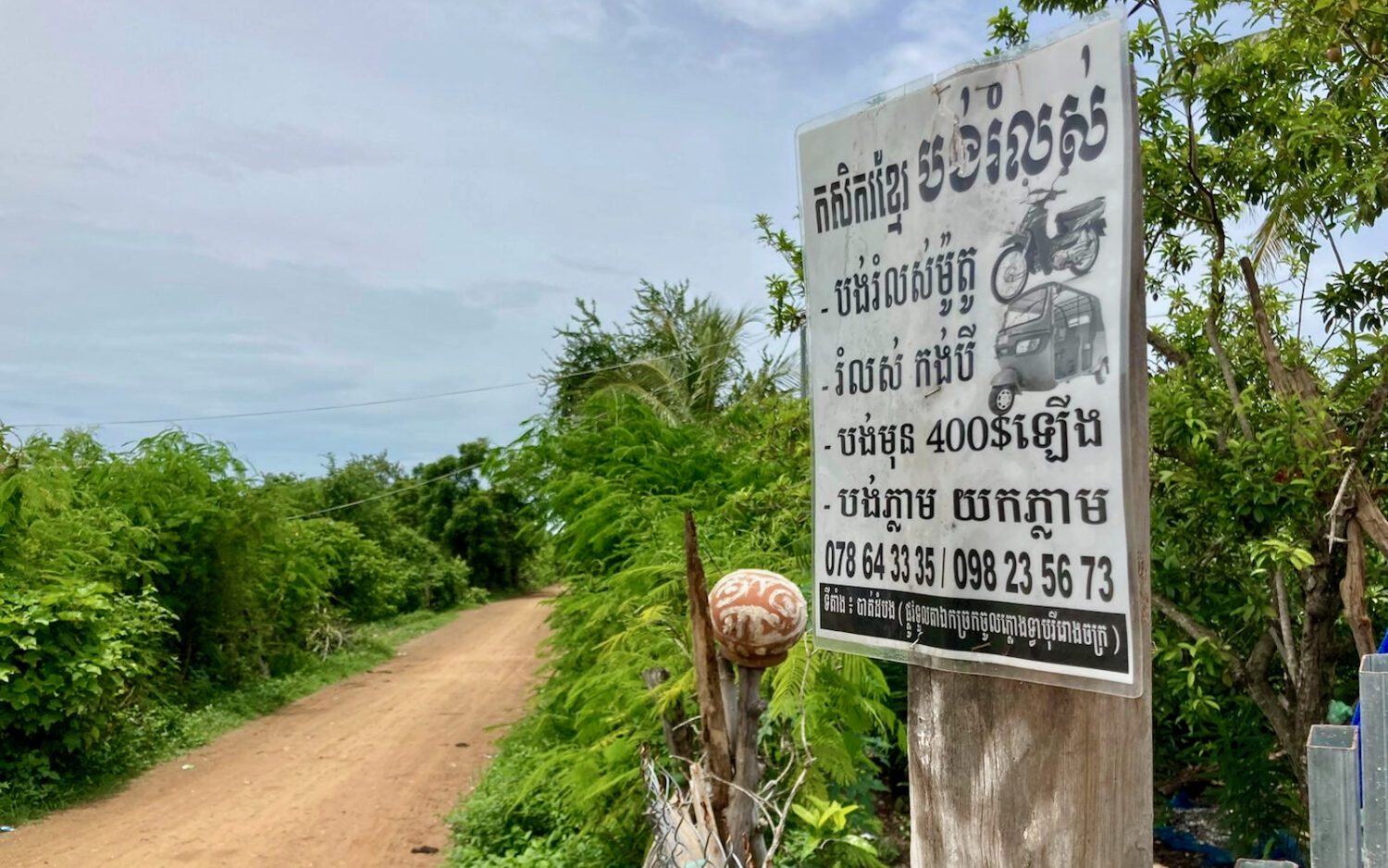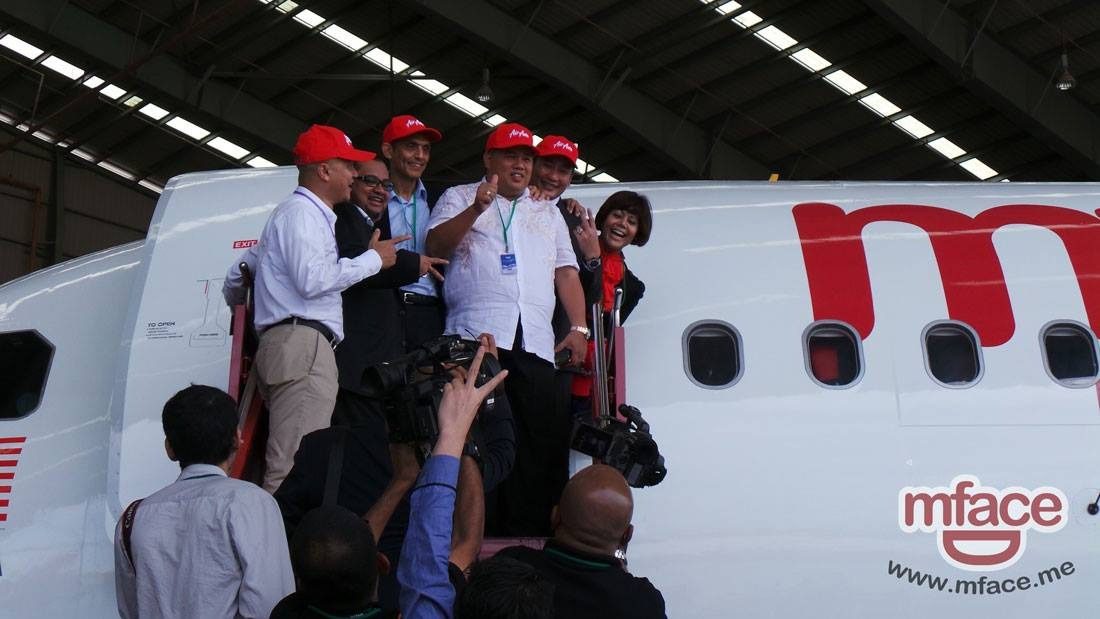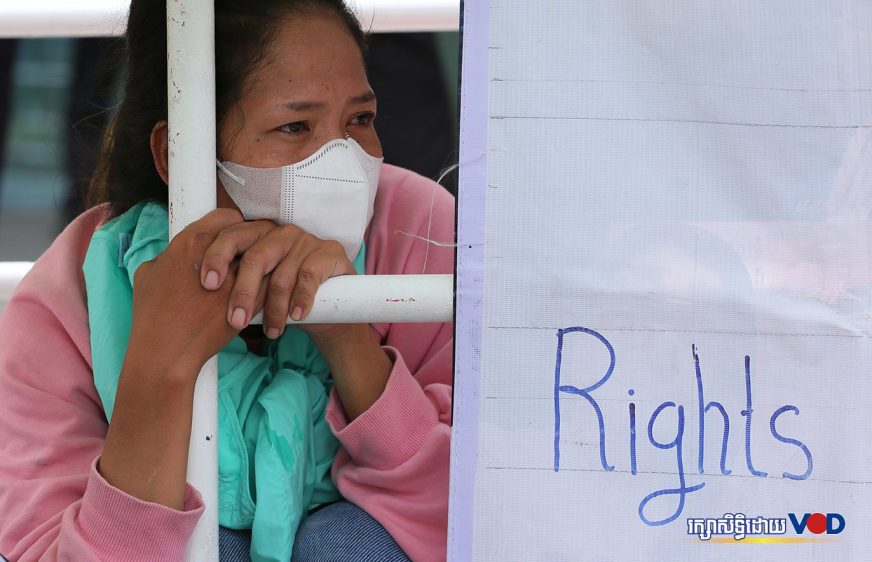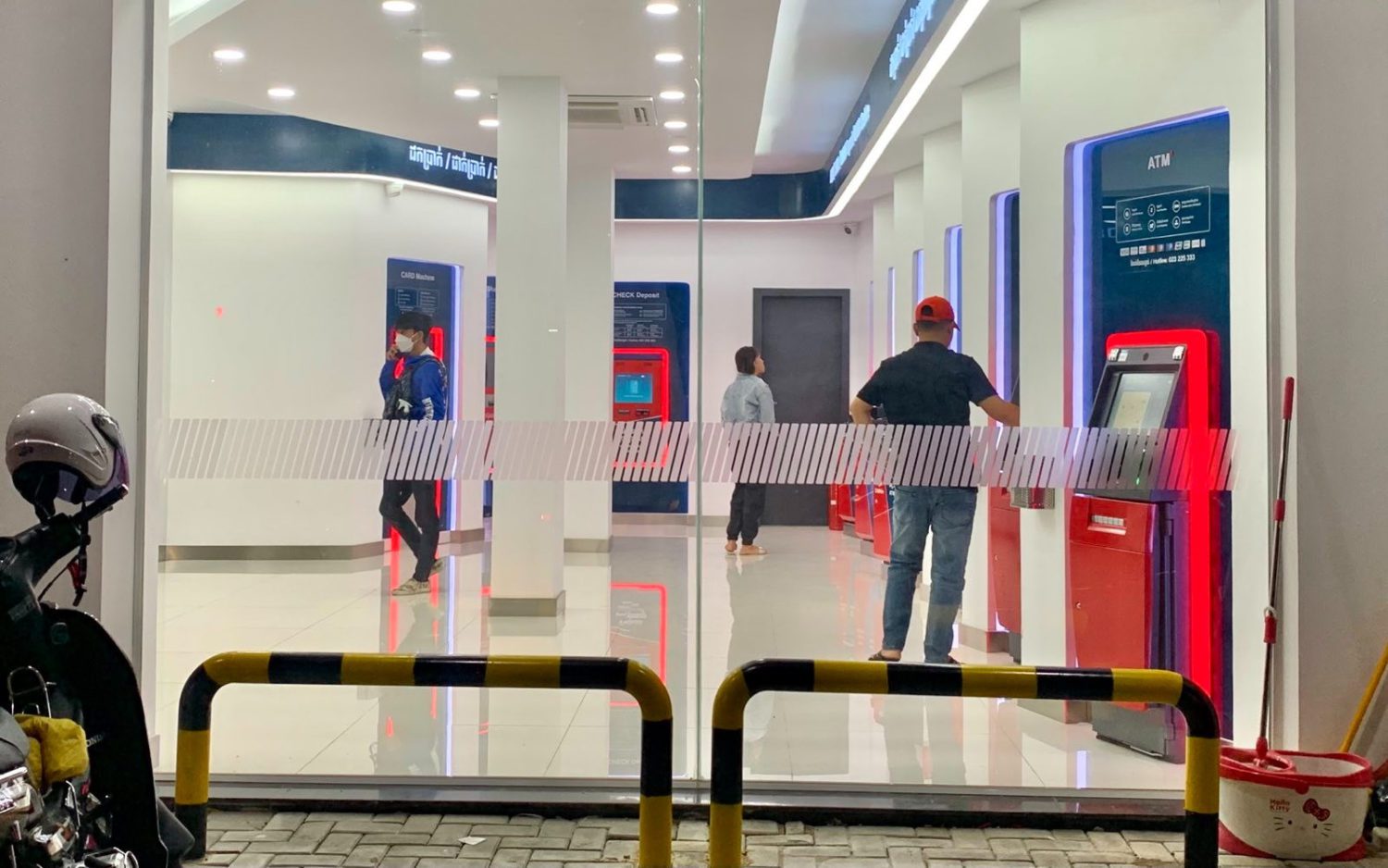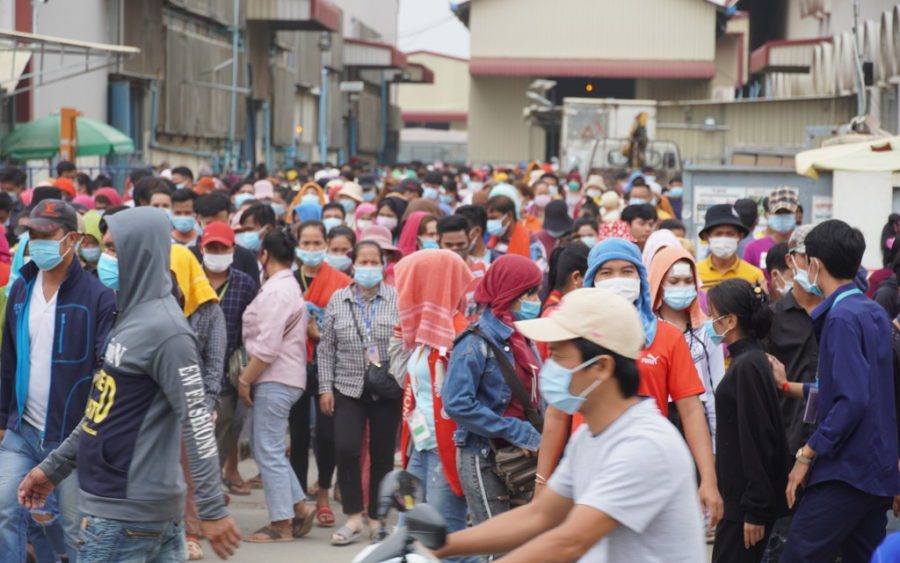Tourists have all but disappeared from Siem Reap, home to the Angkor Archaeological Park, for about 15 months now. Those who painted or made handicrafts near Angkor Wat have lost their incomes almost completely.
Speaking with a 1-year-old child in her arms, Kim Sot, an artist in Nokor Thom commune’s Kravann village, says her family has painted and sold art for eight years. But sales have been down 90 percent since the Covid-19 pandemic.
“A few remaining Cambodian customers help to buy some. It’s not good,” Sot says. She and her husband feel hopeless at times, she says.
Around her, many stalls selling food, clothing and souvenirs have shuttered.
Soun Sinak, in the same village, sits with three children at the front of her house, where she displays leather art for sale. She has images of horses, elephants and various patterns cut from cowhide and framed like a picture.
“There are people who love these leather sculptures,” Sinak says. Some Cambodians like to buy the art to put in their guesthouse or hotel. “I’ve sold some. At this moment, it’s not nothing at all.” But it’s also not much.
“Now, in the Covid era, it is as if there are no foreign guests who come to visit our country. … So our sales are only to some local Cambodians, they buy them and put them in a house or a hotel,” she says.
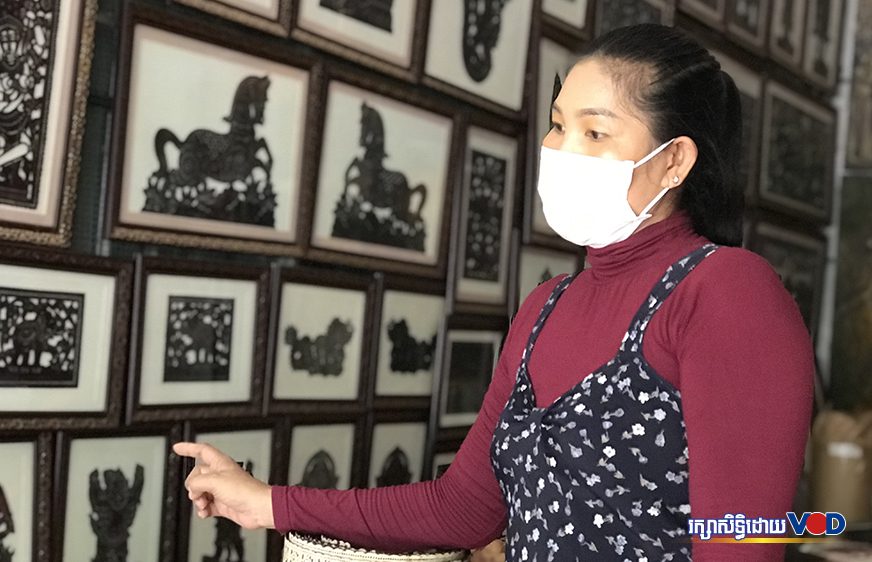
After 20 years in the business, she is barely able to cover her living costs.
“I am very worried if this Covid continues like this. If there’s another year or two more years like this, there will be nothing,” Sinak says. “I feel speechless.”
Khun Siwon, 44, who sells souvenirs such as baskets, flutes and other handicrafts, says she has laid off her staff and is struggling with debt.
Business is down to almost zero, she says.
“In the past, we could easily support and raise children in the family, but now the situation amid Covid is a bit hard.” The handicrafts, which promote Khmer culture, merely sit on her shelves, Siwon says.
Handicrafts used to provide employment in rural areas around Siem Reap, but when sales are slow, there’s no work for craftsmen and women either, she says.
Siem Reap provincial deputy governor Ly Samrith says he’s at a loss.
“I don’t know what to do. This has affected all of us together. This issue, thousands of tour guides unemployed…” Samrith says.
Authorities are trying to accelerate vaccinations, as the world may have to learn to live with Covid-19, he says. “Maybe it will not disappear. So we have our way of living,” he says. With reduced death rates because of the vaccine campaign, fear could decline and tourism could return, he says.
Public vaccinations in the capital, Phnom Penh, have already been declared complete, and the campaign is now spreading to other provinces. However, Covid-19 infection and death rates remain close to the peak rates the country has seen.
Long Kosal, spokesperson of the Apsara Authority, which oversees Angkor Park, says he doesn’t know how to help, as it is a global crisis. The authority is instead working on improving the area’s infrastructure and attractions to prepare for when the crisis is finally over, Kosal says.
“What should we do in such a situation? I also have no other choice either. For the Apsara Authority, what we have tried to do is we have tried to improve, take this opportunity to work, try to improve, research, renovate our local temples well to prepare and receive guests who will return in the future,” he says.
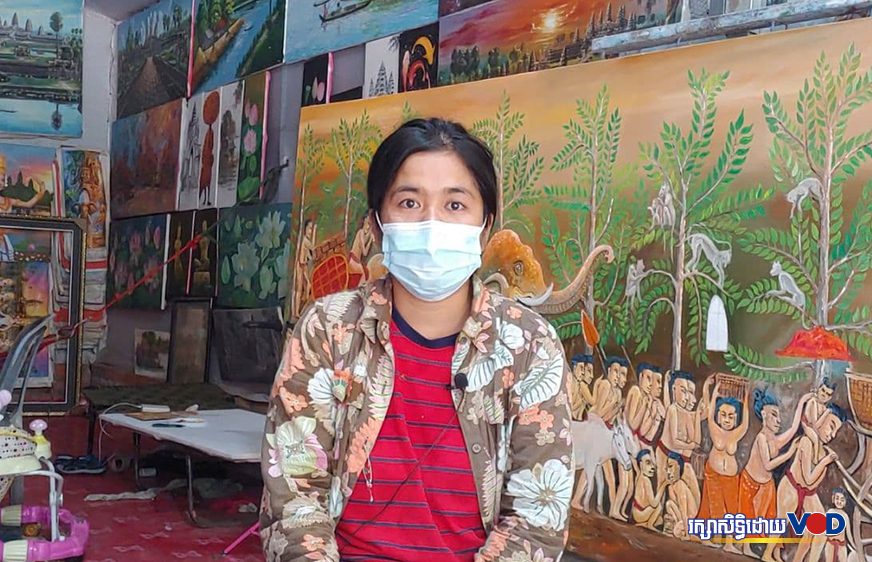
Official statistics say international tourist arrivals were down 98 percent, 96 percent and 97 percent in the final three quarters of 2020. For the fourth quarter, arrivals were down from 1.8 million in 2019 to 58,000 in the same period last year.
The Siem Reap area saw about 1 million domestic and 970,000 international visitors in the first four months of 2019. Two years later, for the first four months of 2021, the area recorded 115,255 Cambodian visitors and 4,528 international visitors, according to the Tourism Ministry.
Vorn Pov, president of Independent Democracy of Informal Economy Association, says the financial hardships in the sector are great, and handicrafts are also a part of the culture. He wants to see more promotion and preservation of the art, he says.
Otherwise, Pov says, the trade that helps sustain this culture will be lost.
(Translated and edited from the original article on VOD Khmer)



